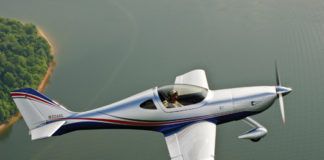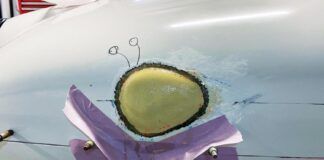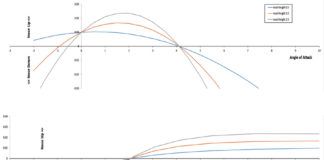Not long ago, I attended a GPS seminar, which happened to be only on the Gremlin SHG034. I was disappointed. This seminar would have been interesting if I were flying a big twin or corporate jet, but this particular GPS, at probably one-third the price of the airplanes I rent, is overkill for the airplanes I fly.
Halfway into the seminar I popped my hand up and said, “I don’t mean to be the devils advocate, but in the 10 plus years Ive been flying out of Orange County Airport, Ive never been given a Standard Instrument Departure (SID) or a Standard Terminal Arrival Route (STAR).” In my experience, entering all these waypoints or routes is useless, because what is entered in the GPS and what ATC gives the pilot are two different realities. The Direct-To button is the only feature that the speaker and I agreed upon.
So heres the beef: While its hard to deny the value of GPS, I think the software engineers lack the desire or ability to create a user-friendly GPS. I don’t need all the bells and whistles, or a 191-page, 1-inch-thick user manual. I don’t want to spend half my lifetime trying to figure out how to turn certain functions off and where to locate the functions I need-for example, latitude and longitude readout. Now where would I use this?
A GPS, for one thing, is not going to give me the next controller frequency. (It may be in the database, but it cant know if sectors are combined or if there’s some other reason to use a different frequency.) I cannot understand the need for the compass rose map display since I have a DG handy, right in front of me. The compass rose display tries to simulate an HSI, which is nice, but it misses the boat when you cant enter the desired course heading for intercept.
Then I move on to the navigation screen. The airspace map is important when flying VFR along with Earth map options (freeways) and text label locations. On the other hand, when flying IFR, I really want this ground clutter gone. Yes, you can declutter it, but sometimes its not easy or intuitive. Wouldnt it be great to have an IFR/VFR button to instantly change the display?
Icons: This one I could never figure out on my handheld GPS. With all these little symbols like phone, deer crossing (thats a good one, at 3500 feet, a deer crossing my flight path). Lets have a little reason here. I don’t need to know where the local McDonalds is. The best one is the alarm that will go off at a selected time in an airplane where I cannot hear myself think without a headset. Oh, and then there is the fun of deleting all waypoints and trail plots from the previous flight. Where is that command? Do I really need to know this stuff in the first place, and is it necessary to keep this information around?
And Now for the Good
However, for those of us who are geographically impaired, a GPS is wonderful. I wish Id had one on my long cross-county as a student pilot. Together with email, I truly believe the GPS is one of the greatest inventions since duct tape. As I was writing this, I decided to pull out my GPS and marvel through my user handbook to come up with some notes and comments.
The database provided with the GPS simply amazes me. Now I can lighten my flight bag by throwing away my AFD and E6B computer. With all this information at hand, I directly enter the airport name into the GPS, and all the information thats needed for the airport-frequencies, services and runway information-appears. The same applies to waypoints, VOR, NDB and imaginary locations (Area 51). Creating a route is wonderful for VFR, and, in my dreams, IFR. Planning a route is one thing, but here in Los Angeles actually flying it is something else.
The Benefit of Experience
Let me share my experiences with GPS. One Thanksgiving, my lady friend and I flew up to Fox Field, in Lancaster, California, to spend the holiday with some friends. I had entered all my waypoints into my trusty Lowrance AirMap 100 the day before my flight. The next day at the airport, I filed my instrument clearance with clearance delivery-the same flight I had in my GPS-and clearance gave me what Id requested. After being airborne, I was issued two more clearances. By the time I had received my third clearance, I was laughing on my read back, and so was ATC, because I hadn’t been airborne more than 10 minutes. With a few radar vectors here, there and everywhere, I was patted on my little empennage and sent off to my destination. I spent the rest of the flight using one waypoint function and the rest of the time using the Direct-To button.
The funny part of this flight was that I had two Bendix/King KX-155 nav/coms, DME, NDB and GPS, and I still missed the airport. Thats OK. It was a clear day, 100 miles visibility. I was looking for a postage stamp in the middle of the desert with the lights on. It might have been easier to find the airport at night. Cant blame the GPS for that.
Recently, my uncle, Pete Jacobson, was telling me about his experiences as a pilot during WW-II. He flew an F10 (converted B-25) over Central and South America on photo reconnaissance, and told me that he had wanted
to fly fighters. However, he was too tall and was assigned to bombers. He said
it was easier to land the B-17 than the B-25, and he had 700 hours in both airplanes. They had their own removable GPS-not as reliable as todays-and a bit more costly to operate. Those GPSes could give you a bad indication, the worst verbal feedback, and they had to be fed, bathed and clothed. They were called navigators.
Summing Up
Kelly Johnson once remarked, “Keep it simple.” He paused and then added…”Stupid” to the person standing next to him. This is a man who designed the SR-71 and many other famous airplanes, yet in a television interview he mentioned only the KISS principle. That concept is whats needed with todays GPSes. I hope some software engineer is paying attention.
Maybe some day, and this is a fantasy of course, the software engineers might have a reality check and start writing the programs to be user-friendly for pilots. Even so, whenever I go flying, I never leave home without my handheld GPS, handheld radio, cell phone-batteries all charged-and plenty of Nicotrol gum. Happy flying!
The Techno Nerds Rejoinder
I know many pilots who share Norm Ellis desire for simpler navigational equipment, boxes that aren’t just full to overflowing with features that we feel like well never use. Features that clutter the mind, eat computer memory and add cost.
Turns out, Im not one of them.
At the moment, the primary navigator in my airplane is a Garmin GPSMAP 496, a terrifically capable device that I can take with me, use in the car or on the motorcycle. (But never on the kayak…thats just too much.) Its connected to a Garmin (Apollo) SL30 nav/com through a serial link.
One of the features that seems like just so much brochure dressing is the automatic frequency preselect. The GPS communicates with the nav/com, providing it with nearest-waypoint and route data that includes the stored com and nav frequencies. When there is no active waypoint in the GPS, the nav/com simply receives the 10 nearest stations; when you’re on a direct-to or route, it places the frequencies associated with the route waypoints into the SL30. Using them is easy: Press the SEL button. The associated frequencies and identifiers are shown on the right side of the display. To put one in the standby part of the nav/com, hit ENT. Then hit flip-flop and you’re there. Seems like a lot of work when you could just read the frequency off the map and put it in manually, right? I thought so, too, but in the last few months Ive been using this feature more and more.
Heres something else. Lets say you’re VFR going into a complicated bit of airspace. Youd like to avail yourself of flight following so that your good luck and calm radio demeanor might grant you clearance through Class B rather than having to drive around it. Many of the frequencies aren’t to be found-or are difficult to find-on paper maps. My trick is to find an airport 20 to 30 miles from the edge of the airspace, look it up on the 496, and read off the departure frequency associated with it. Nine times out of 10 this will work to get you in the system. Failing that, you can try the Nearest function for the closest ARTCC (center) frequency.
Ellis comments about ATC upsetting the best-programmed route plans is well-taken. But when the controller says, “Cleared direct NOWRE intersection then as filed,” Id much rather take a swipe at the GPSs database than hunt around the enroute chart for it. One other trick is to “can” a few familiar departure and arrival procedures as separate routes. For example, I know that coming out of Torrance, California, Ill get runway heading to pick up the Los Angeles VOR 170 radial, LIMBO intersection, LAX, Santa Monica VOR, and then Im on my way. I have that first part set as its own route, and then switch to the actual final routing later. Pilots who use only the Direct-To keys are missing some real time-saving features.
-Marc Cook



